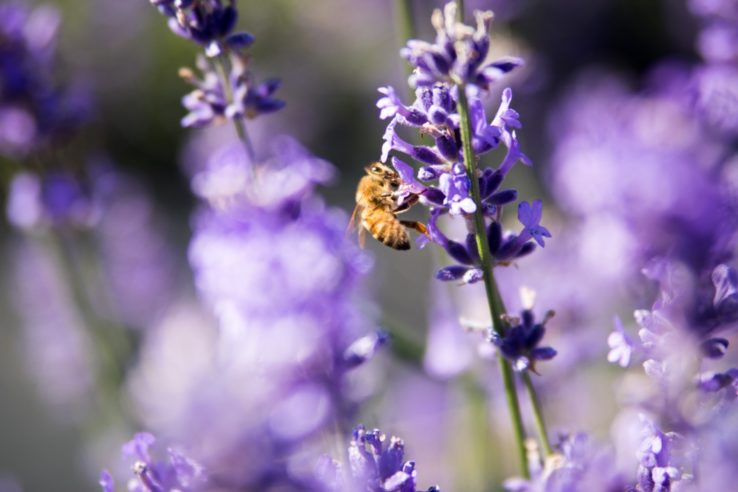National Honeybee Day occurs each August on the 21st. This day seeks to raise awareness for the honeybee – just one of 946 types of bees found in Colorado. The honeybee is just one of the many pollinators contributing to agricultural success and diversity. Because of these reliable insects, as well as other species such as butterflies and beetles, we have an abundance of fruit trees, flowers, and produce, pollinated because of the winged-creatures’ hard work and perseverance. Insects pollinate approximately 70% of the world’s flowering plants and 35% of the world’s food crops. Without pollinators, humankind would struggle to exist, as would many other species that live off plants, flowers, and insects.
If you’re a gardener interested in adorning the outdoor space of your new home in Elizabeth, Colorado, consider creating a pollinator-friendly garden that includes habitats for both honeybees and native pollinators. Flower beds, greenhouses, and even vegetable gardens can be planted to create a pollinator habitat and allow these crucial insects to thrive. Here are some simple tips for creating pollinator and honeybee friendly habitats in your garden next planting season.
Choose Flowers that Attract Bees and Pollinators
Honeybees enjoy native plants like wildflowers specific to the area. In Colorado, plant Rocky Mountain beardtongue, blanket flower, prairie coneflower and bee balm. To really boost your wildflower game, plant Rocky Mountain Bee Plant, also frequently unflatteringly called “stinking clover” or “skunk weed”. It’s not as fragrant to humans as it is to bees – they go wild for this flower. Herbs, berry bushes, and flowering fruit trees are other wonderful options to plant if you prefer a more organized aesthetic.
Provide Fundamental Elements for Survival
Pollinators, including bees, need elements besides pollen to thrive. They need water, space, and shelter, as well. Plant your bee garden so that flowers, vegetables, herbs, and fruit trees are flowering at various times throughout the year. Grasses, shrubs and trees provide nesting and shelter space for bees and other pollinators. Including a variety of plants, mostly native species, is the best way to keep your pollinator habitat well-stocked.
In the early season after Colorado’s last freeze, plant early-season flowers, like nodding onions, prairie smoke, and blue flax. Then, as the temperature and ground warm up, plant mid-season flowers and flowering trees. Late-season plants include the wildflowers mentioned above, as well as many others. For a complete list of seasonal pollinator plants, check out this list.
Location, Location, Location
The same rules that apply to real estate apply to a bee habitat. Where you plant your garden is crucial in the quest to attract and retain pollinators. Honeybees and other pollinators, like moths, butterflies, and wasps, prefer sunny areas with larger groupings of the same plants as opposed to random plants interspersed throughout the yard. Group plants together and ensure that stand-alone beds are close to any potted plants and flowering trees. Pollinators will work more efficiently if gardens are large, connected, and sunny, rather than having to move around to various areas searching for plants.
Bees and humans are at a tipping point in their symbiotic relationship. Honeybee populations, as well as native pollinator populations, are on the decline due to habitat loss and pesticides. Our interwoven food system desperately needs honeybees to come close to feeding a burgeoning global population. In short, we need each other. To do our part, we can cultivate spaces that are safe and healthy for bees and other pollinators so they may have plenty of habitats in which to survive and thrive.
At Independence Community in Elizabeth, Colorado, our aim is to keep bees and other pollinators healthy by cultivating beautiful flowerbeds throughout our neighborhood. Our Pollinator District partnership with Butterfly Pavilion ensures that the landscape throughout the community provides a rich habitat for both people and pollinators. We encourage residents of our modern, new homes in Elizabeth, Colorado to create their own pollinator habitats so that we can protect the bee and everything it has to offer.

